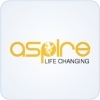Home Safety Information
Safety Information
Lithium Battery safety
Lithium batteries can provide extremely high currents and although this is useful in applications where high currents are required, a too-rapid discharge of a lithium battery can result in overheating of the battery, rupture, and even explosion.
- NEVER leave batteries unattended when charging.
- Never over-tighten atomisers onto your device, screw only until contact is made - then stop.
- Don't heat, incinerate or reverse polarity.
- Do not over-charge or over-discharge.
- Always use the correct charger as recommended and supplied by Creme de Vape.
- Always use the exact batteries recommended, do not attempt to economise by buying alternative batteries. The increased risk of an explosive event is not worth it.
- Don't use unprotected li-ion/ICR batteries.
- Don't charge batteries on wooden or carpeted or other combustible surfaces.
- Remove batteries from the charger immediately the light turns green, NEVER leave charging overnight or in unoccupied premises.
- Set freshly charged batteries aside for a couple of hours before using.
- Store batteries safely in specially designed battery containers - NEVER loose in your pocket or bag where they could come into contact with other items and cause a dangerous explosive event.
- Discontinue using a battery if it fails to retain a charge or looks damaged in any way.
- We are not responsible for any damage caused by misuse or mishandling.
- Please dispose of batteries safely and according to regulations.
Download Nicotine & battery Safety Information pdf
Please visit the Electrical Safety First website for more information.
Nicotine Safety
Nicotine is classed as a poison in its pure form, taken in high enough doses, can kill and we are required to supply advice and warnings with this product.
Vaping products may only be sold to existing smokers who are over the age of 18. Your age will be verified. See Age verification for more information.
- Keep ALL vaping equipment locked away and out of the reach of children and pets.
- In case of contact with eyes, rinse immediately with plenty of water.
- Use appropriate containment to avoid spillage and/or environmental contamination.
- Seek medical advice if you feel unwell.
If you're not an existing smoker, or vaper, or are unsure about using e-cigs, or have a pre-existing health condition, please consult your doctor or physician before using ANY nicotine containing product.
Download Nicotine & battery Safety Information pdf
Sub-ohm considerations
The use of very low resistance atomisers is often referred to as "sub-ohming", because the atomisers and coils used are lower than 1.0Ω.
This is not to be confused with temperature control, where the coil resistances are sub-ohm, but not operating in a true sub-ohm fashion.
Sub-ohming is very popular, but there have been concerns related to battery safety as well as the fact that sub-ohmers tend to vape much more liquid than other vapers, and this increases their exposure to the as-yet unknown risks related to inhalation of larger quantities of food flavourings.
If you wish to use sub-ohm devices, you must make sure the battery device you are using is fully capable of safely supporting the required drain rate, and features enhanced safety circuitry. NEVER sub-ohm on an unregulated or mechanical device. We strongly recommend you thoroughly research the topic before embarking on any experiments with sub-ohming. Sub-ohm vaping is undertaken entirely at your own risk and we do not accept any responsibility for any damage caused by this activity.
Further Information
Although an e-cigarette mimics and satisfies the oral sensation of smoking, we not legally allowed to describe e-cigarettes as an aid for quitting smoking or a nicotine replacement therapy (NRT).
Electronic cigarette technology is still relatively new, however it is universally recognised as being infinitely safer than smoking combustable tobacco, and there is a growing body of literature relating to these devices.
In particular, Dr Konstantinos of the Onassis Cardiac Centre in Greece has been particularly active in the area of e-cig recearch and we recommend you pay a visit to his site at http://www.ecigarette-research.org




















